Home cinema speaker placement guide: Soundbar to 7.2
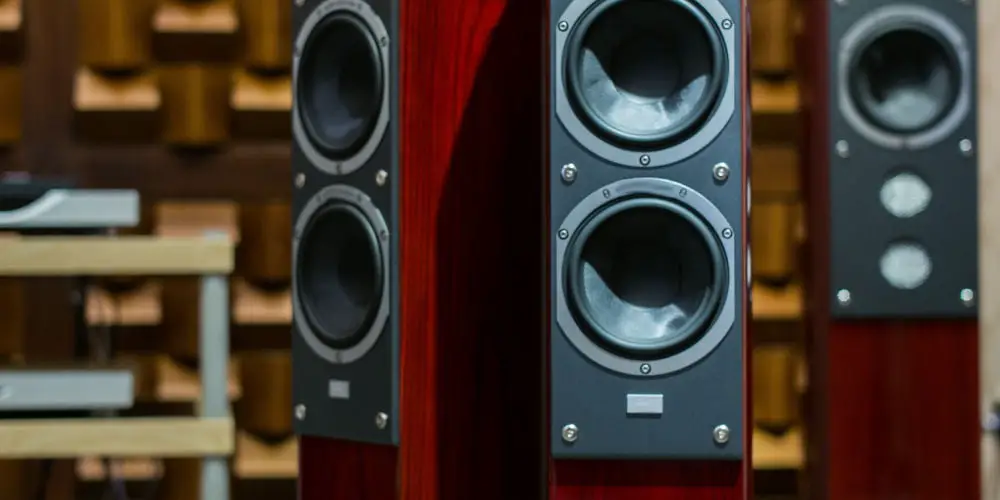
One of the hardest elements of building a home cinema is where to put speakers. It doesn’t matter if you’re using a soundbar with a subwoofer or a 7.2 surround speaker set-up, getting the sound right can be tricky.
In this home cinema speaker placement guide, we’ll explore the most common configurations from a simple soundbar to 7.2 surround sound set-up and every arrangement in between.
Using the correct speaker placement will increase your enjoyment of watching movies and gaming by creating a more immersive sound. Here’s are the home cinema speaker placement basics you should try.
Speaker placement basics
There is some science behind home cinema speaker placement. That said, every room is different and so there needs to be an element of experimentation. You may also need to improve the room’s acoustics for the optimum sound.
The overall aim is to find the best speaker placement for all the seats and not just for the one or two you’ll use often. Optimising for one or two seats is likely to provide the rest with a poor audio experience.
You’ll want to use high-quality cable to connect your speakers and receiver. Try to keep cables short and secure them down when your happy with the placement.
What do the numbers mean?
If you’re confused what 2.1 or 9.1 means, don’t worry. The number refers to the number of speakers used. The most common speaker set-ups are 2.0, 2.1, 5.1, 7.1, 9.1 for example.
The first number refers to the number of general speakers. While the second indicates how many subwoofers the system has.
If you see a third number, then this digit refers to the number of speakers above ear level which add a 3D effect. For example, an AV receiver which supports Dolby Atmos will have outputs for 4 addition speakers and so will be referred to as 9.2.4.
Soundbar (2.0 channels)
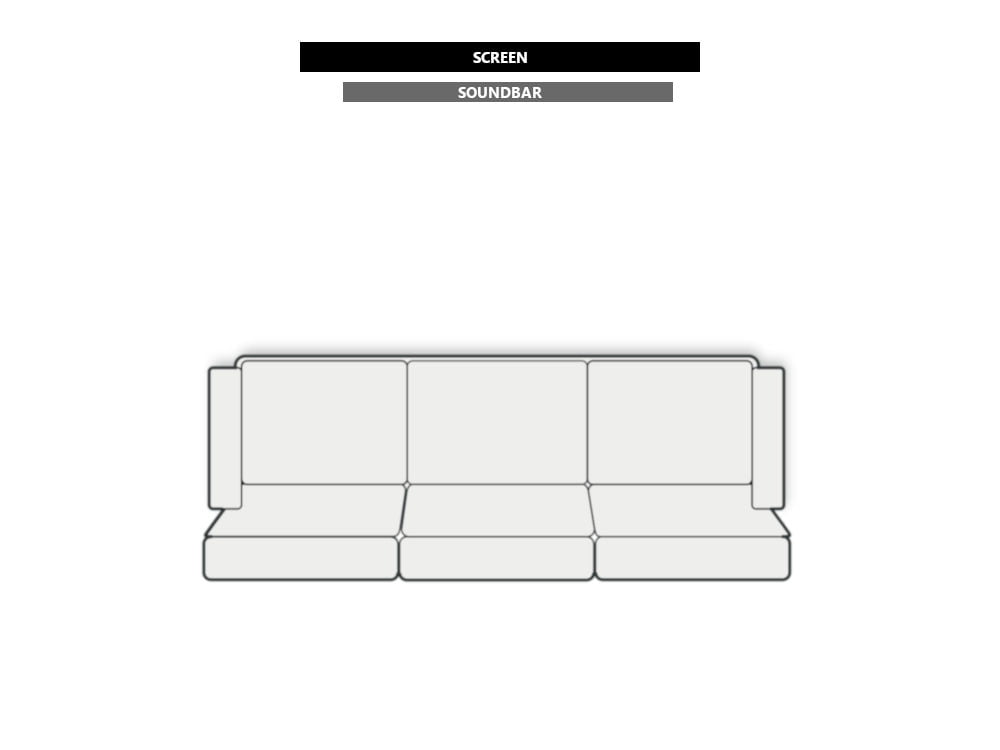
Soundbar, the most basic and affordable improvement you can make to a TV or projector with built-in speakers. A soundbar sits under your display (TV or screen) and projects sound into the room. Most come with a mounting kit making adding one easy.
A soundbar splits the audio by frequency and uses multiple speakers to faithfully reproduce the sound. If you’re unsure, start with our review of the best soundbars under £100.
Stereo speakers (2.0 channels)
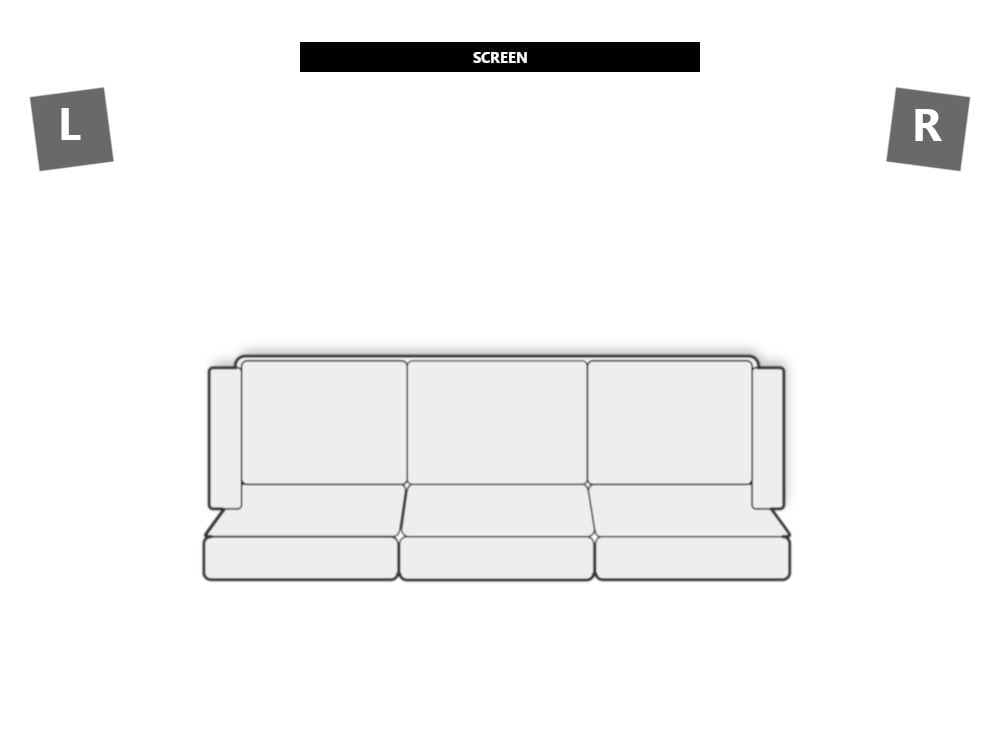
Stereo speakers are a step up as you can direct the sound towards a sweet spot. Like soundbars, a stereo speaker set-up will split the audio by frequency and then reproduce the sound using multiple speakers.
Most wrongly place one speaker on either side of the display, usually square on. While this home cinema speaker placement spreads the sound throughout the room, it doesn’t provide the optimum audio experience.
A better approach is to raise the speakers so that they are aligned with the viewer’s ears. Then rotate them between 20 and 30 degrees in towards the seating area. This creates a sweet point in the middle of the seating and a more defined sound.
Soundbar with Subwoofer (2.1 channels)
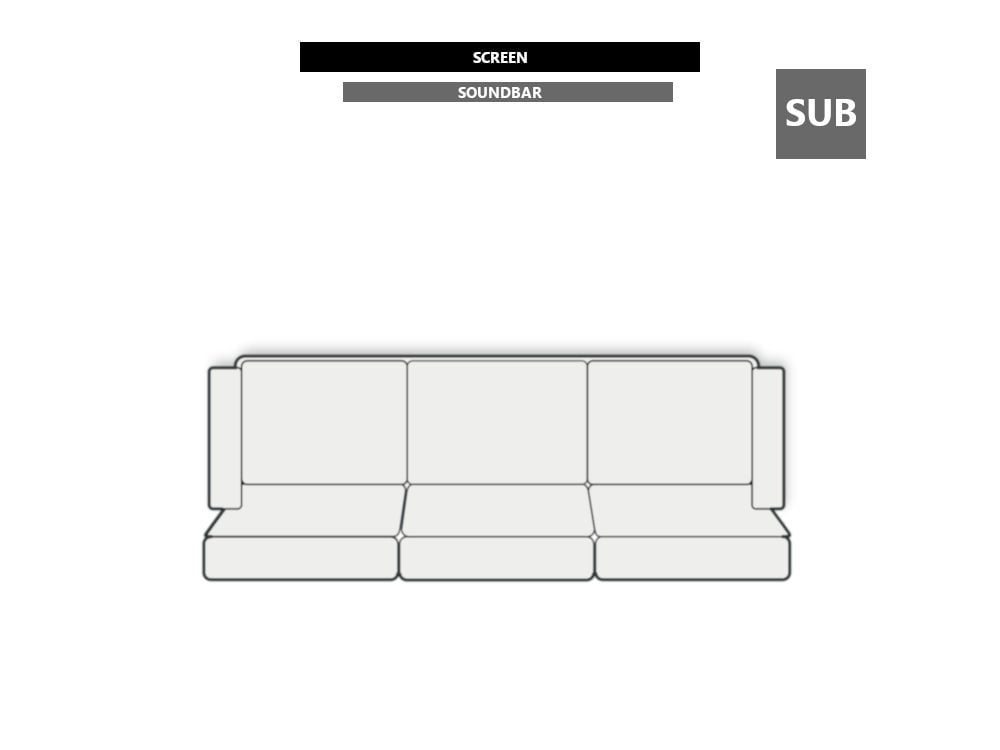
If you lack space for a 5.1 channel set-up or are designing a multiple purpose space, then using a 2.1 channel set-up is ideal.
The soundbar takes care of higher and middle frequencies and creates a stereo sound, hence the 2 channels. Again you’d place the soundbar under your display pointing toward the seating.
The remaining channel is a subwoofer, which handles the low-end. There’s no one place to put a subwoofer. Some like to put in on the floor under the soundbar, while others place it off to the side. So it’s worth experimenting.
Stereo speakers with Subwoofer (2.1 channels)
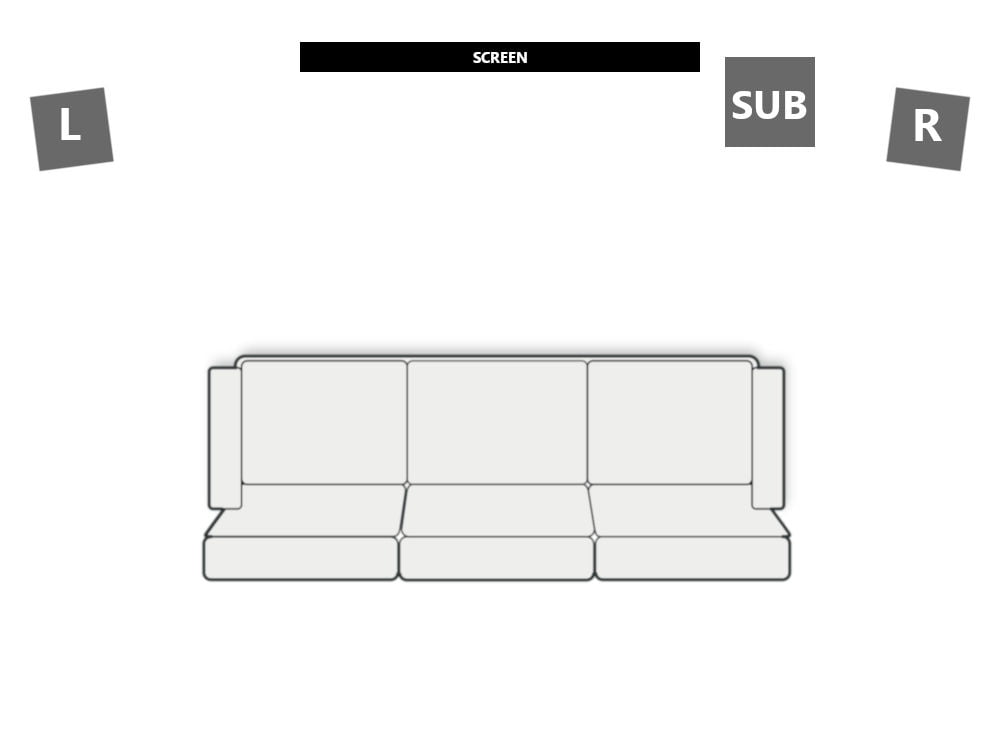
Like with the stereo speaker set-up above, focus on the speakers on a sweet spot and then experiment with where you feel the subwoofer work best.
Again this set-up provides an improves over a soundbar and subwoofer combination and is ideal for achieving the best sound in smaller rooms. Plus, it allows for a flexible home cinema speaker placement within the room.
5.1 channel set-up
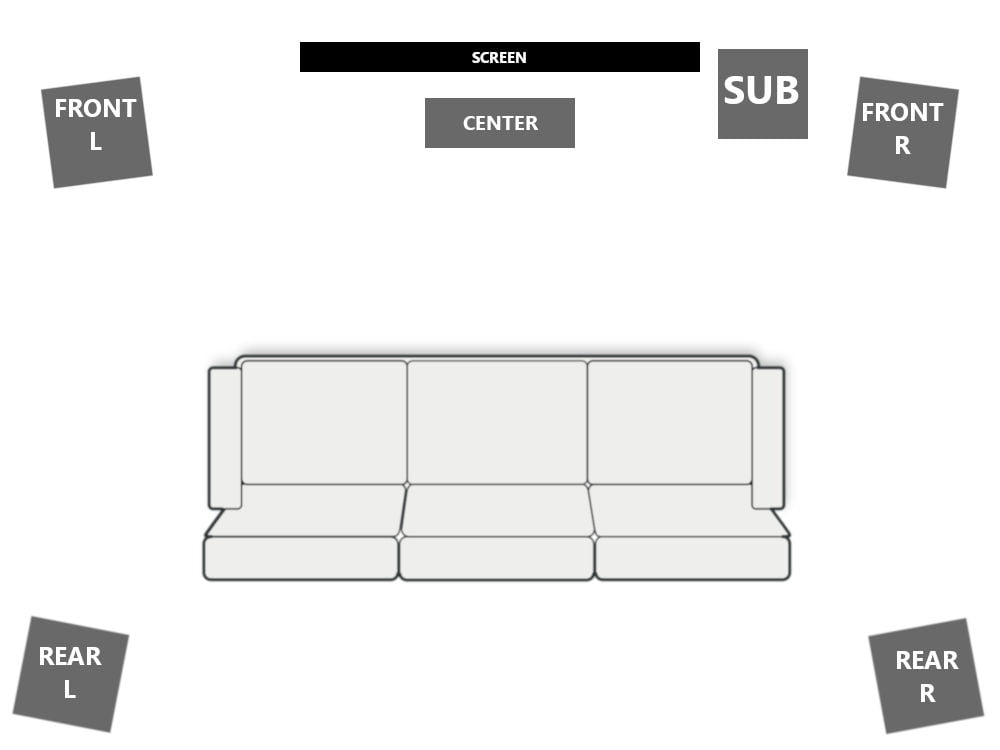
If you’re looking for the ultimate surround sound experience then you’ll want to invest in a 5.1 channel set-up. Typically you’d use an AV receiver (read our top picks) to handle the distribution of both audio and video.
A 5.1 channel speaker set-up consists of front left and right, centre, rear left and right, and a subwoofer. The typical home cinema speaker placement for 5.1 is quite simple.
The centre speaker should be placed in the middle of the screen as it’s used for dialogue. If you’re using a TV then you’ll want to place it below. For those projecting onto a screen, then you’ll want to place it behind and set it at roughly ear level. Either of these speaker placements will make speech sound natural.
Place the front left and right speaker so that they sit at the same height and distance from the wall as the centre speaker. Again with these two speakers, you want to angle them between 20 and 30 degrees toward the centre of the seating.
Next position the rear speakers so they mirror the front stereo pair. These primarily handle sound effect. Some people like to raise the height of the rear speakers by 30 to 50 cm to create sound separation and a more immersive experience. It’s worth experimenting!
Finally, the subwoofer, which can be placed anywhere. You can play with its placement to balance the frequencies.
7.1 channel set-up
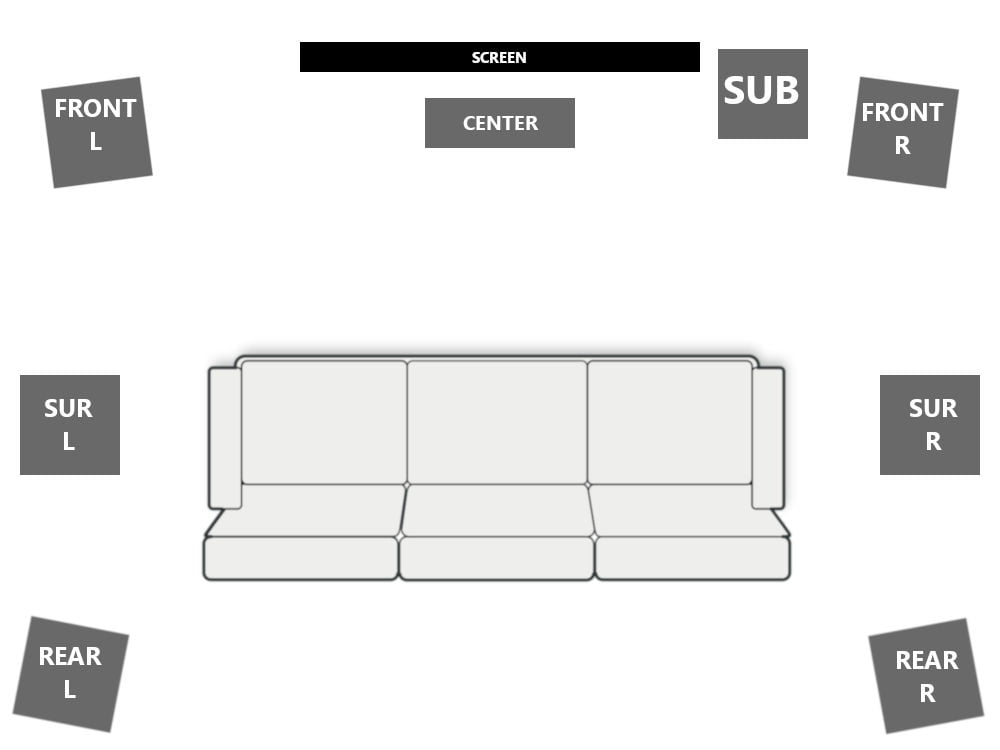
Adding up to further three speakers, in a 7.1 or 7.2 set-up, you’ll need to use a 7.2 AV receiver to distribute both audio and video.
In a 7.1 surround system, you have 2 addition speakers which are placed in between the front and rear pairs. In a single row of seating, these speakers sit at 90 degrees to the user and roughly at ear level. If you have two rows or more, then you’ll want to place them in the middle of the seating area.
In a 7.2 system, you have an additional subwoofer. However, this is only really useful in larger rooms as you don’t want bass frequencies to overpower the rest.
9.1 channel set-up
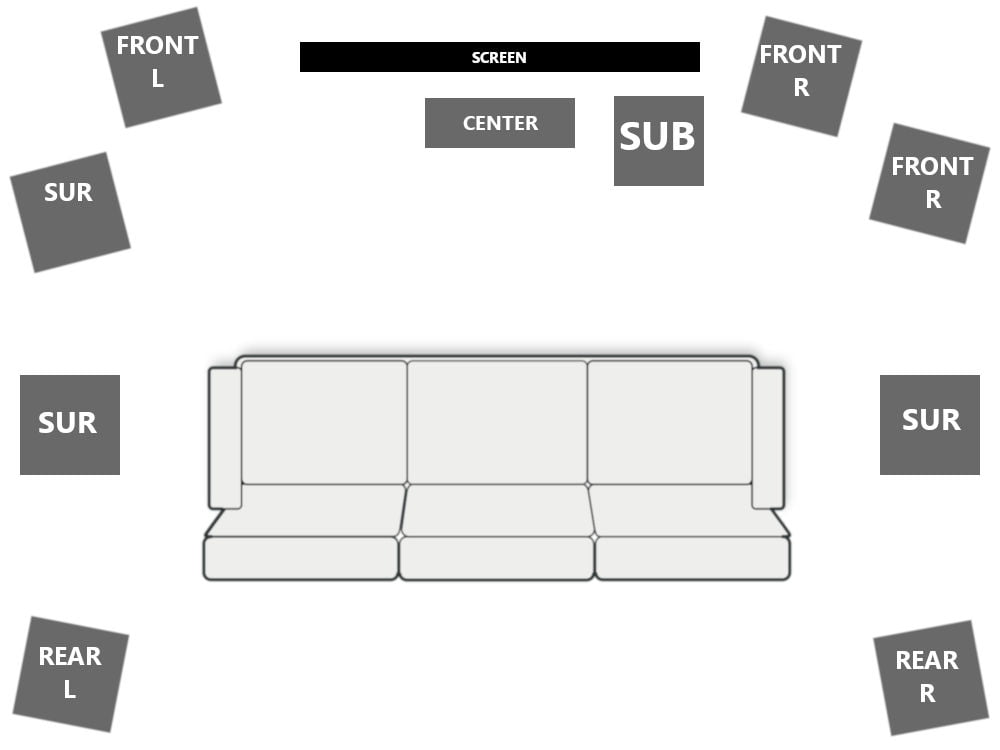
If you don’t want to compromise on sound quality and aim for a true cinema experience then you’ll want to invest in a 9.1 speaker set-up.
Again you’re adding two further speakers to the system and so you’ll need to take some time to experiment with the best home cinema speaker placement. These two speakers are placed between a 50 and 70-degree angle to the sweet spot and create a wider surround picture.
Most AV receivers which can distribute to 9 speakers will also have 2 subwoofer outputs. With such a large number of speakers, it could be worth adding a second subwoofer to balance out the sound.
Perfecting your home cinema speaker placement
Depending on your budget, room size and it’s overall purpose, you’ll want to experiment with your home cinema speaker placements and acoustic treatments for the optimum sound. You’ll also want to ensure you correctly match your amplifier with speakers.




